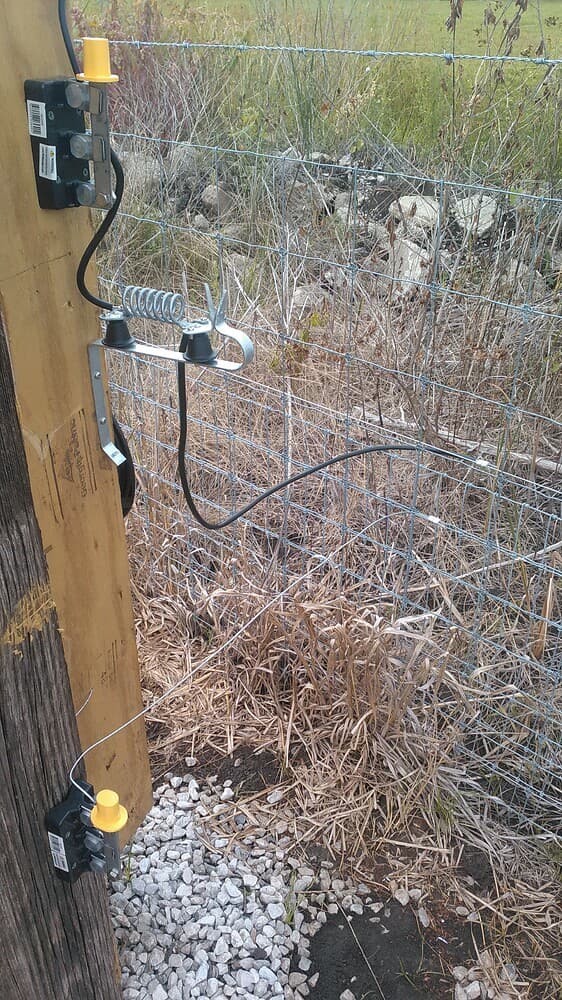Finally got the electric fence hooked up, despite being super busy. I pretty much had to get it hooked up, else coons and possums would once again be tearing through the orchard, destroying bushels of fruit every night.
Here are some final pics.
The post goes 4’ in the ground, backfilled with gravel. The box is screwed with gussets glued in place for extra stability. We stood on the floor of the box and it didn’t budge.
I made a lightening coil out of insulated galvanized wire. I plan to remove the electrical tape and zip tie the coil together, so it will look a bit neater and professional.
The diagram recommends fuses in between the solar panel and the controller, in between the battery and the controller, and in between the controller and the charger. I soldiered in simple 10 ga. inline fuse housings which take auto fuses, which are cheap and easily available. I welded up and drilled holes for the switch bank. I used heavy duty 40 amp dc switches (ac switches supposedly don’t last as long when used on dc).
Actually didn’t hook it up how it ought to be hooked up, in that the ground should be hooked to ground rods. Instead I hooked the ground up to the field fence because that was quicker. The danger in hooking it up that way is that if lightening strikes the field fence there is a risk of frying the charger through the ground side. Plus I don’t really have any lightening protection on the lead side, other than the lightening coil(s)
Because of that I installed knife switches on both the lead wire and the ground wire. The plan is that if I know a storm is coming, just to disconnect both the lead and ground via the knife switches, so that it won’t matter if lightening strike the hot wire, or the field fence.
We tested it the old fashioned way, using a piece of insulated wire to connect the field fence and the hot wire. It produces a nice blue spark which will jump about a 1/4" gap.
One of my field hands dared me to grab the hot wire and field fence at the same time. Said he would do it if I did. Not to disappoint, I grabbed both wires. I was a bit surprised how powerful even a 5 joule fencer can be. I suppose it’s because it’s almost a perfect ground situation, vs simply standing on the ground and grabbing the hot wire isn’t as good a ground, as one’s shoes insulate one from the ground considerably. Anyway the jolt I could feel deep in my bones. I don’t think it could hurt anyone, unless one had a weak heart, but I imagine the jolt would make a kid cry. So at least preliminarily, the 5 joule charger is plenty big enough. I also used the old trick of taking a green blade of grass and touched the grass to the hot wire, while touching the field fence with my other hand. Even that produced a decent pulse through my hands.
We had an issue of it grounding out at first. Eventually I found some sub contractors broke a corner insulator laying fiber optic cable.
So far the solar panel seems to be keeping up to keep the battery fully charged.







 … !
… !









